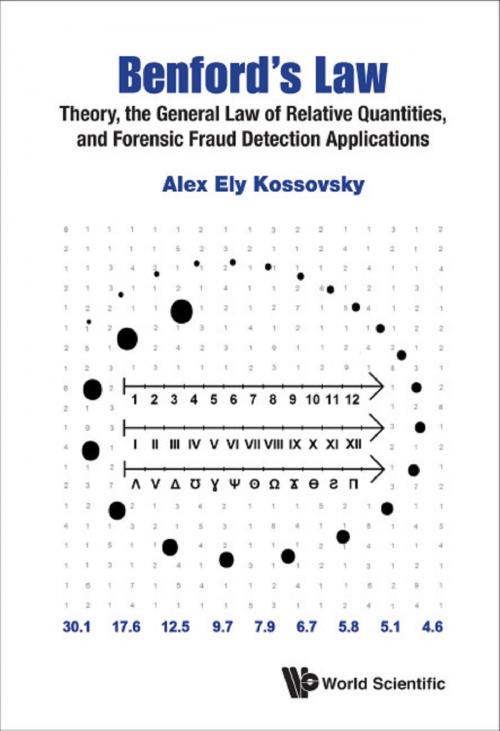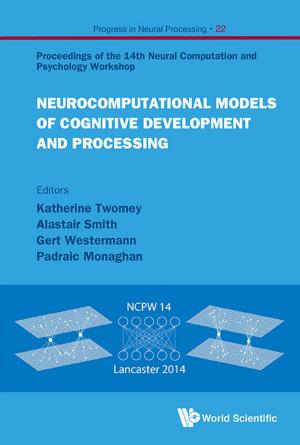Benford's Law
Theory, the General Law of Relative Quantities, and Forensic Fraud Detection Applications
Nonfiction, Science & Nature, Mathematics, Statistics| Author: | Alex Ely Kossovsky | ISBN: | 9789814583701 |
| Publisher: | World Scientific Publishing Company | Publication: | August 21, 2014 |
| Imprint: | WSPC | Language: | English |
| Author: | Alex Ely Kossovsky |
| ISBN: | 9789814583701 |
| Publisher: | World Scientific Publishing Company |
| Publication: | August 21, 2014 |
| Imprint: | WSPC |
| Language: | English |
Contrary to common intuition that all digits should occur randomly with equal chances in real data, empirical examinations consistently show that not all digits are created equal, but rather that low digits such as {1, 2, 3} occur much more frequently than high digits such as {7, 8, 9} in almost all data types, such as those relating to geology, chemistry, astronomy, physics, and engineering, as well as in accounting, financial, econometrics, and demographics data sets. This intriguing digital phenomenon is known as Benford's Law.
This book gives a comprehensive and in-depth account of all the theoretical aspects, results, causes and explanations of Benford's Law, with a strong emphasis on the connection to real-life data and the physical manifestation of the law. In addition to such a bird's eye view of the digital phenomenon, the conceptual distinctions between digits, numbers, and quantities are explored; leading to the key finding that the phenomenon is actually quantitative in nature; originating from the fact that in extreme generality, nature creates many small quantities but very few big quantities, corroborating the motto "small is beautiful", and that therefore all this is applicable just as well to data written in the ancient Roman, Mayan, Egyptian, and other digit-less civilizations.
Fraudsters are typically not aware of this digital pattern and tend to invent numbers with approximately equal digital frequencies. The digital analyst can easily check reported data for compliance with this digital law, enabling the detection of tax evasion, Ponzi schemes, and other financial scams. The forensic fraud detection section in this book is written in a very concise and reader-friendly style; gathering all known methods and standards in the accounting and auditing industry; summarizing and fusing them into a singular coherent whole; and can be understood without deep knowledge in statistical theory or advanced mathematics. In addition, a digital algorithm is presented, enabling the auditor to detect fraud even when the sophisticated cheater is aware of the law and invents numbers accordingly. The algorithm employs a subtle inner digital pattern within the Benford's pattern itself. This newly discovered pattern is deemed to be nearly universal, being even more prevalent than the Benford phenomenon, as it is found in all random data sets, Benford as well as non-Benford types.
Contents:
- Benford's Law
- Forensic Digital Analysis
- Fraud Detection
- Data Compliance Tests
- Conceptual and Mathematical Foundations
- Benford's Law in the Physical Sciences
- Topics in Benford's Law
- The Law of Relative Quantities
Readership: Professionals, researchers and serious students of financial and data analysis, forensic accounting, fraud investigation, auditing, mathematics and probability and statistics.
Key Features:
- The book is a concise account of practical applications of the phenomenon of fraud detection and it corrects several errors committed in the field where mistaken applications are used
- The perceptive reader interested in knowing about the use of this digital law in fraud detection, would be able to learn about it with a minimal amount of effort and time, without searching through literally hundreds of various small articles on the topic
- The book provides numerous new theoretical points-of-view of the phenomenon, new methods for testing data for compliance, and fuses many different aspects of the law into a singular explanation
Contrary to common intuition that all digits should occur randomly with equal chances in real data, empirical examinations consistently show that not all digits are created equal, but rather that low digits such as {1, 2, 3} occur much more frequently than high digits such as {7, 8, 9} in almost all data types, such as those relating to geology, chemistry, astronomy, physics, and engineering, as well as in accounting, financial, econometrics, and demographics data sets. This intriguing digital phenomenon is known as Benford's Law.
This book gives a comprehensive and in-depth account of all the theoretical aspects, results, causes and explanations of Benford's Law, with a strong emphasis on the connection to real-life data and the physical manifestation of the law. In addition to such a bird's eye view of the digital phenomenon, the conceptual distinctions between digits, numbers, and quantities are explored; leading to the key finding that the phenomenon is actually quantitative in nature; originating from the fact that in extreme generality, nature creates many small quantities but very few big quantities, corroborating the motto "small is beautiful", and that therefore all this is applicable just as well to data written in the ancient Roman, Mayan, Egyptian, and other digit-less civilizations.
Fraudsters are typically not aware of this digital pattern and tend to invent numbers with approximately equal digital frequencies. The digital analyst can easily check reported data for compliance with this digital law, enabling the detection of tax evasion, Ponzi schemes, and other financial scams. The forensic fraud detection section in this book is written in a very concise and reader-friendly style; gathering all known methods and standards in the accounting and auditing industry; summarizing and fusing them into a singular coherent whole; and can be understood without deep knowledge in statistical theory or advanced mathematics. In addition, a digital algorithm is presented, enabling the auditor to detect fraud even when the sophisticated cheater is aware of the law and invents numbers accordingly. The algorithm employs a subtle inner digital pattern within the Benford's pattern itself. This newly discovered pattern is deemed to be nearly universal, being even more prevalent than the Benford phenomenon, as it is found in all random data sets, Benford as well as non-Benford types.
Contents:
- Benford's Law
- Forensic Digital Analysis
- Fraud Detection
- Data Compliance Tests
- Conceptual and Mathematical Foundations
- Benford's Law in the Physical Sciences
- Topics in Benford's Law
- The Law of Relative Quantities
Readership: Professionals, researchers and serious students of financial and data analysis, forensic accounting, fraud investigation, auditing, mathematics and probability and statistics.
Key Features:
- The book is a concise account of practical applications of the phenomenon of fraud detection and it corrects several errors committed in the field where mistaken applications are used
- The perceptive reader interested in knowing about the use of this digital law in fraud detection, would be able to learn about it with a minimal amount of effort and time, without searching through literally hundreds of various small articles on the topic
- The book provides numerous new theoretical points-of-view of the phenomenon, new methods for testing data for compliance, and fuses many different aspects of the law into a singular explanation















